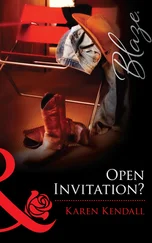While he’d been talking I’d been studying one of the old laminated plastic spaghetti catalogues that served as place mats. The specimens were classified with entomological rigour, yellow lettering on a blue background: Number Seven Hatchets, Number Twelve Friar’s Sleeves, Number Fourteen Gunshot, Number Fifteen Partridge Eyes, Number Twenty-Five Ave Maria, Number Thirty-One Pamperitos, Number Forty Argentinas alla Napoli . Above the list was a logo with a globe and a strand of spaghetti running around the equator. Over the North Pole ran a banner that reads “ Round The World ” and another under the South Pole that says “ Tuttolomondo Spaghetti ”.
“There’s something I don’t understand,” I eventually say, far more disconcerted than I’d anticipated. “Why did Neri go and ask your grandfather of all people?”
Guido looks at me for a second, perplexed, before answering.
“He didn’t just ask Grandpa,” he says. “I thought you knew. Neri did the rounds of the whole town before he made up his mind. House by house. To see if people agreed with him wasting Ezcurra.”
THE TOWN ITSELF is a square, ten blocks by ten. Fewer than half show any trace of building, a sure sign that the town never managed to fill out the ground plan drawn up by its indifferent or overoptimistic surveyor; unlike other surrounding towns built on the same plan that ended up outgrowing it and imposing their own outlines on the pampas, Malihuel has never lived up to its map. The centre, as you might expect, is occupied by two blocks of humid, tree-filled square around which the main buildings are distributed: the two hotels, the local Council offices, the church, the Tuttolomondo pasta factory on the opposite corner and, as you go down Comandante Pedernera Street, the police headquarters, the primary school and the old cinema (nowadays a cultural centre). If the square is the centre of spiritual and public life, Veinticinco de Mayo Avenue is the main artery of Malihuel’s commercial life — spread along its length are Ferro & Brancaloni’s butcher’s, the concrete arcade of the new coach terminal, the supermarket, Sacamata’s Stores, Fischer’s Hardware, Mendonca’s Pharmacy, on opposite corners the Kawasaki Bar and the closed-for-refurbishment Makumba (the erstwhile Sucundún), the Los Tocayos hotel-bar and Chacón’s kiosk adjoining, the imposing armoured corner of the National Bank, and the two service stations (Shell and YPF). The rest is in the adjacent streets: two or three more general stores, butchers’ and kiosks, the corner of the Yacht Club with its basketball and tennis courts, Dr Alexander’s surgery, the barber’s, the ladies’ and men’s gyms, prudently separated, the post office, the courts on the same block as the police headquarters, the Indiana Jones Video Club and the satellite dishes of the cable station, the telephone exchange and Ye Olde Tuttolomondo Ice Cream Parlour next to the Banco Provincia on the corner, a low, brick building with a wooden door and bars on the windows from the days of mounted bandits. Two blocks from the square, towards the lagoon, stands the relic of an even more remote past — Malihuel’s watchtower, the cornerstone of at least one of the five vertices of the boat-shaped fort founded by the Viceroys on Ranquel Indian land. You only have to look at it to get a precise idea of what this corner of the world must have been like in those days — standing atop the platform the eyes of the lookout, if tall, would be at most five metres above ground-level; only a landscape drawn with a spirit level and absolutely devoid of even the slightest suggestion of a tree could be effectively guarded from a height lower than a two-storey house — which, as its inhabitants will often tell you, are nowhere to be found in Malihuel. It used to be possible to go up the church steeple and enjoy a vast three-sixty-degree panorama of the lagoon, the neighbouring towns and the surrounding countryside, but no one keeps count any more of how many years it has been since its only visitors are the parish priest, who can negotiate the crumbling stairs in the dark, and successive incarnations of a pair of large white owls. But it isn’t for the lack of sweeping vistas that the inhabitants of Malihuel languish; it is impossible to find a street corner from which you can escape the sight of open country in all four possible directions. (There are no streets in all of Malihuel that aren’t parallel or perpendicular — the Hispanic infatuation with the checkerboard saw the pampas as the perfect submissive body for the privileged exercise of its perversion.)
With the exception of the eucalyptuses of the Colonia and the age-old specimens that give the square some shade, the trees lining the streets of Malihuel are spindle-trunked and stunted, apparently intimidated from growing any taller by the surrounding plain. But dotted anarchically here and there — one in the cemetery, several in assorted houses and gardens of the well-to-do, and a whole procession along the unbuilt dirt street that skirts the town out by the lagoon — rise the sturdy boles of Saharan palms, whose exotic crowns, silhouetted almost black against the feeble charm of a sunset sky, turn Malihuel into an oriental desert town. These and the relative age of its buildings lend Malihuel if not a measure of beauty then at least of poise.
On the north-east side of downtown Malihuel are the new commercial high school, whose ugly concrete edges are unmellowed by the surrounding young olive trees, the identical white boxes of the Banco Hipotecario houses, and, after an isthmus occupied only by Malihuel’s second primary school (“the little school”), the Colonia, a rectangle five blocks by ten cut in two lengthwise by the train tracks and the station, within which you find a scattering of small dwellings, shacks, ruins (including those of two passenger hotels) and patches of waste ground.
The Colonia sprang up at the turn of the century and grew at the feverish pace of the railways, and with them, as the trains first stopped carrying passengers, then freight, it slowly flagged and faded. Two new developments have appeared on its dirt streets in recent times — the green-roofed, brick houses of the FONAVI housing estate and, separated from the station by a lush grove of eucalyptus, a round-roofed, corrugated-iron shed, which is home to the Spiritist Society and hub of the cult of Palmiro Raulí, the prophet of Malihuel, who draws pilgrims from all over Santa Fe and neighbouring provinces.
To the north stand the brick-and-earth mounds of the Federal Shooting Range — now closed down — and the silos of the Bullock Cereal Company, which rise blinding and incongruous from the scorched brick walls of the old Alvarado mill.
Three sets of tracks converge on Malihuel Station, which would make it one of the best connected in the country if the passenger trains still passed through. Perhaps because there is something palpably grand-sounding about them, the locals still use the old names for the branch lines: the Santa Fe Western Railway, which brought the first train from Rosario in 1886; the Great Southern Railway, which, as it advanced towards Río Cuarto in 1890, laced together the towns of Alcorta, Rosas Paz, Malihuel, Elordi and Toro Mocho; and the Argentine Central Railway, which connected Malihuel with Pergamino and Buenos Aires in 1894. The station itself is built in the omnipresent English style, with wrought-iron colonnades and swags of metal fleurs-de-lys along the cornices, a clock with no hands, huge and white like a full moon, and rooms higher than they are long. Of the original installations only the old postbox is still there (albeit painted yellow), leaning like the Tower of Pisa on its rusting base, where every year’s end the children of Malihuel post their letters to Father Christmas and the Three Wise Men.
Читать дальше












